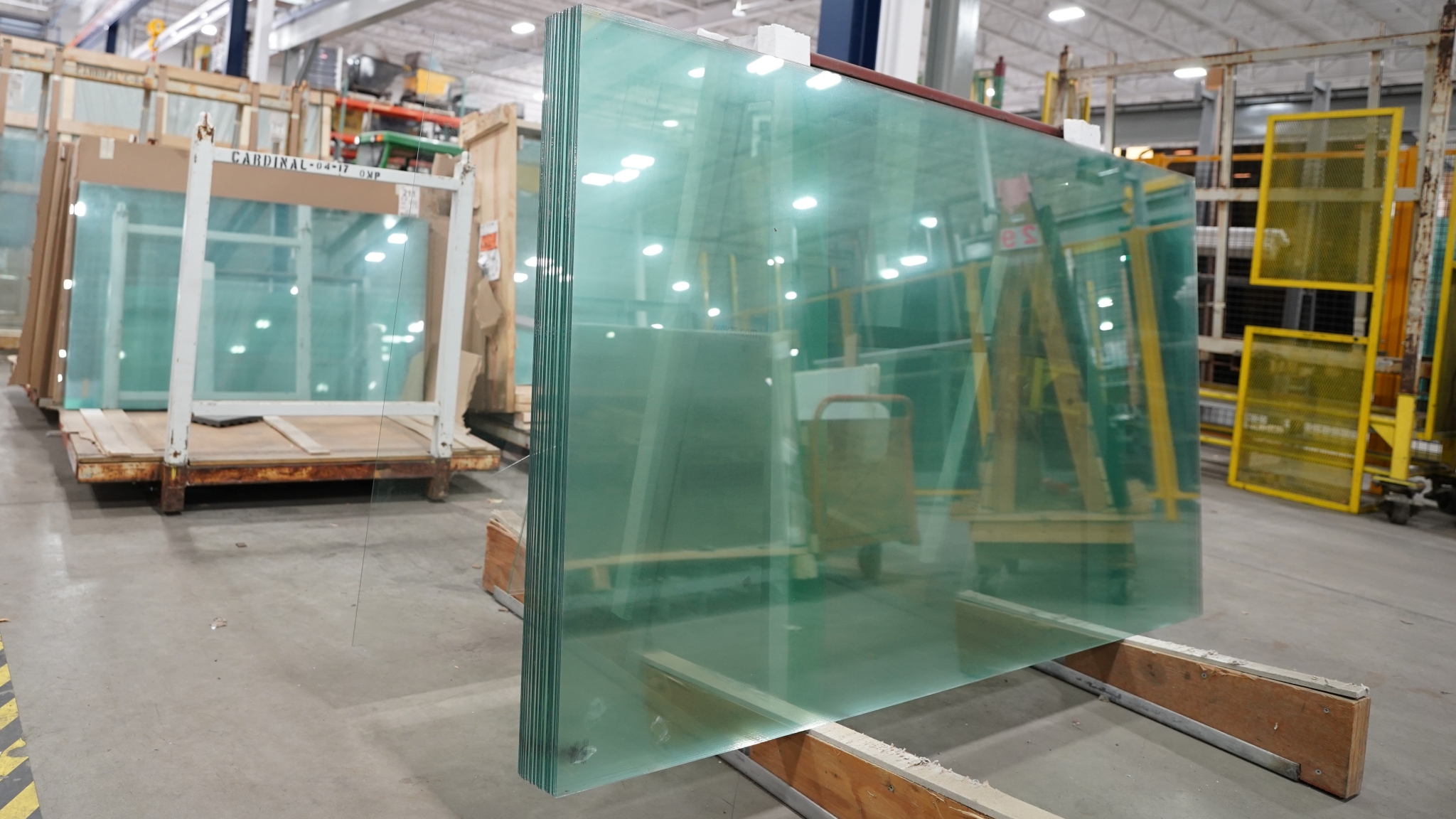Exploring the Fascinating World of Glass: A Beginner’s Guide to the Types and Applications of Glass in the Glazing Industry
By: Chad Ramler – Heartland Glass
Welcome to the captivating world of glass! As a newcomer to the glass industry, I am thrilled to impart my knowledge and assist in educating others about the diverse types of glass employed in both residential and commercial applications.
Join me on a journey as we delve into the extraordinary characteristics and uses of various types of glass, offering a comprehensive overview of this fascinating material.
Float (Annealed) Glass:
Float glass, a pioneering innovation of the mid-20th century, has revolutionized glass manufacturing by floating molten glass on a bed of molten tin, yielding a smooth, distortion-free surface without the need for grinding and polishing. This versatile material is the foundation for an array of construction applications, promoting ample natural light, unobstructed views, and durability. Its strength withstands environmental pressures, temperature fluctuations, and mechanical impacts, reducing the need for frequent replacements and promoting sustainable construction.
Float glass also champions energy efficiency, enabling natural light infiltration that reduces the reliance on artificial lighting. Innovations have introduced low-emissivity (low-E) coatings to enhance thermal properties and lower energy consumption. Additionally, ultra-clear float glass minimizes the green tint found in conventional float glass, making it an ideal choice for applications that prioritize top-tier transparency. This innovation is especially valued in areas like storefronts, display cases, and architectural feature, where visual aesthetics are of paramount importance.
Tempered Glass:
Moving on, let’s delve into tempered glass. Tempered glass stands out as a variety of safety glass engineered to withstand more substantial forces compared to float glass. Crafted through a swift process of heating and cooling, tempered glass acquires augmented strength and resilience. In cases of breakage, it fragments into small, non-hazardous pieces, thereby reducing the risk of injury. This renders it the perfect choice for applications that prioritize safety, such as exterior windows, shower enclosures, glass balustrades, and automotive applications. With its capacity to endure impacts and thermal stress, tempered glass offers a compelling blend of safety and aesthetic appeal.
In addition to safety, tempered glass presents further advantages. It can endure thermal stress and rapid temperature fluctuations without developing cracks, ensuring its dependability in regions experiencing extreme temperature variations. Its heightened strength enables the use of slimmer glass profiles, thus fostering streamlined architectural designs. Utilizing tempered glass, architects and designers can craft visually captivating spaces that emphasize safety while retaining contemporary aesthetics.
Laminated Glass:
Laminated glass, renowned for its remarkable safety and security attributes, is achieved by boding multiple layers with interlayers, ensuring integrity even upon breakage. This feature has established it as the preferred choice for safety-critical applications such as hurricane-resistant windows, skylights, glass facades, and high-security settings.
Laminate glass offers not only impact resistance but also excellent sound insulation due to the dampening properties of the interlayer material, making it an ideal choice for noise-sensitive environments like airports, hospitals, educational institutions, and busy urban areas. Additionally, the versality of laminated glass extends to customizable interlayers, enabling the incorporation of UV-filtering capabilities for the preservation of interior materials and creating comfortable, secure environments.
Insulated Glass:
Let’s delve into insulated glass, celebrated for its exceptional energy efficiency. Comprising multiple glass panes separated by an insulating spacer, it excels at regulating indoor temperature and minimizing heat loss, an asset in energy-efficient construction. The insulating spacer acts as a thermal barrier, effectively blocking heat exchange between the interior and exterior.
Insulated glass units (IGUs) often feature enhancements like low-emissivity (low-E) coatings and glass fills, further enhancing thermal insulation.
Low-E Glass:
A noteworthy innovation in the realm of glass is low-emissivity (low-E) glass. This type of glass has a thin, transparent coating that helps improve energy efficiency by reflecting infrared heat while allowing visible light to pass through.
Low-E glass serves a dual purpose: to regulate heat transfer and protect interior spaces. In warmer climates, it reflects solar heat, keeping the interior cooler and lessening the need for air conditioning, thereby promoting energy efficiency and lowering cooling costs. Beyond energy savings, this glass type safeguards interior furnishings and occupants from harmful UV rays, preventing fading and damage to valuable items. By blocking UV radiation, low-E glass prolongs the life of possessions and ensures indoor comfort. Incorporating low-E glass into your residential or commercial construction enhances energy efficiency, occupant comfort, and long-term cost savings, making it an invaluable component of sustainable building design.
Understanding the diverse characteristics and applications of glass types is crucial for those in the glass industry. Float (annealed), tempered, insulated, and low-E glass all offer unique properties and advantages, from float glass’s versatility to the safety of tempered and laminated glass, and the energy efficiency of insulated glass. This blog aims to provide the insights needed for informed decision making when selecting the ideal glass for your project. Explore the range of options available and choose the glass that best suits your requirements, wishing you success in your project!
Sources:
National Glass Association – https://www.glass.org/
Pilkington – https://www.pilkington.com/
Corning Museum of Glass – https://www.cmog.org/
American Architectural Manufacturers Association (AAMA) – https://aamanet.org/
Glass Magazine – https://www.glassmagazine.com/
Glass International – https://www.glass-international.com/
Glass Technology Services Ltd – https://www.glass-ts.com/
Glass Association of North America (GANA) – https://www.glasswebsite.com/
Glass Research Institute – https://www.glassresearch.com/
Glass Canada – https://www.glasscanadamag.com/
Vitro Architectural Glass – https://www.vitroglazings.com/



Distribution Sales Representative
Customer Service Representative
Senior Sales Estimator